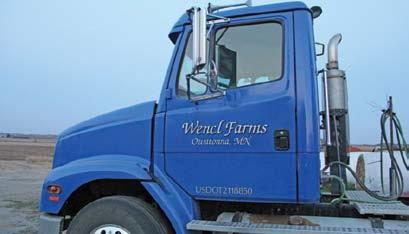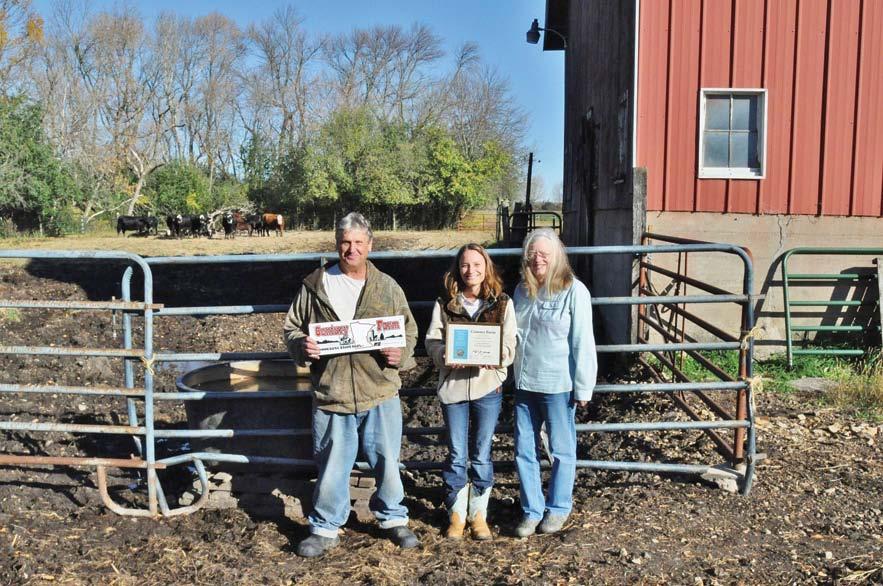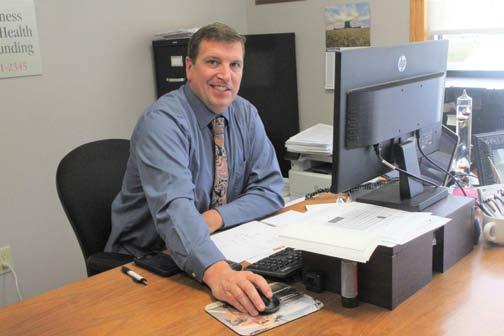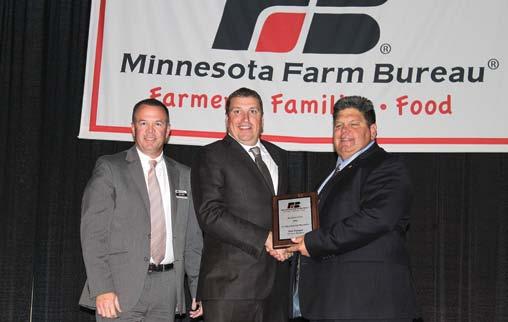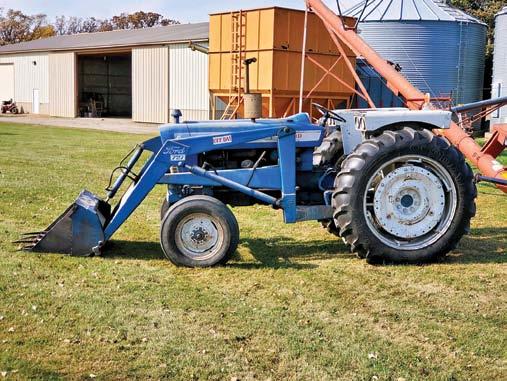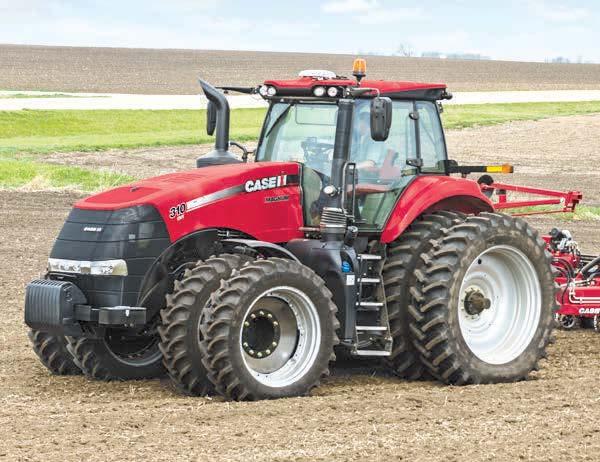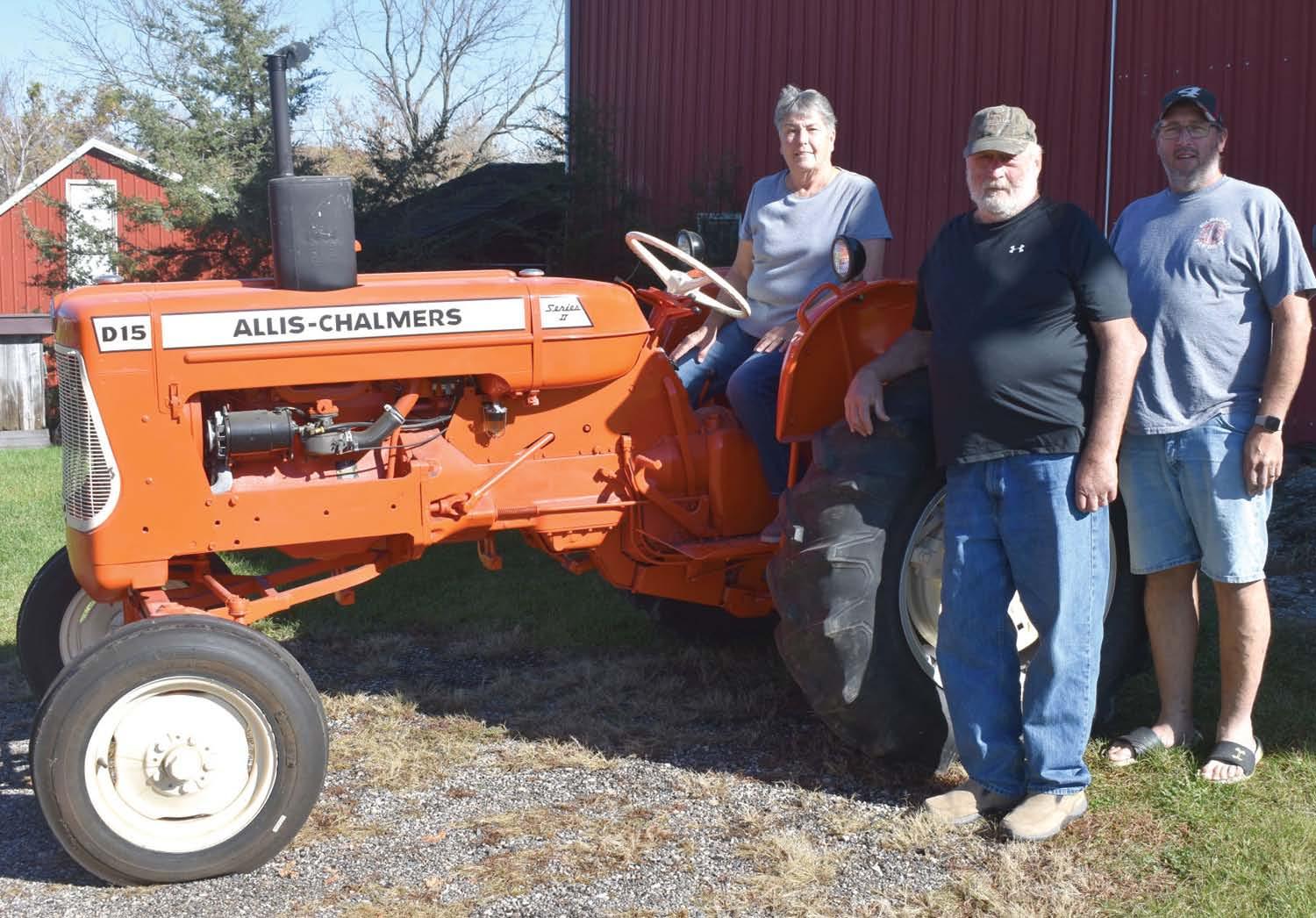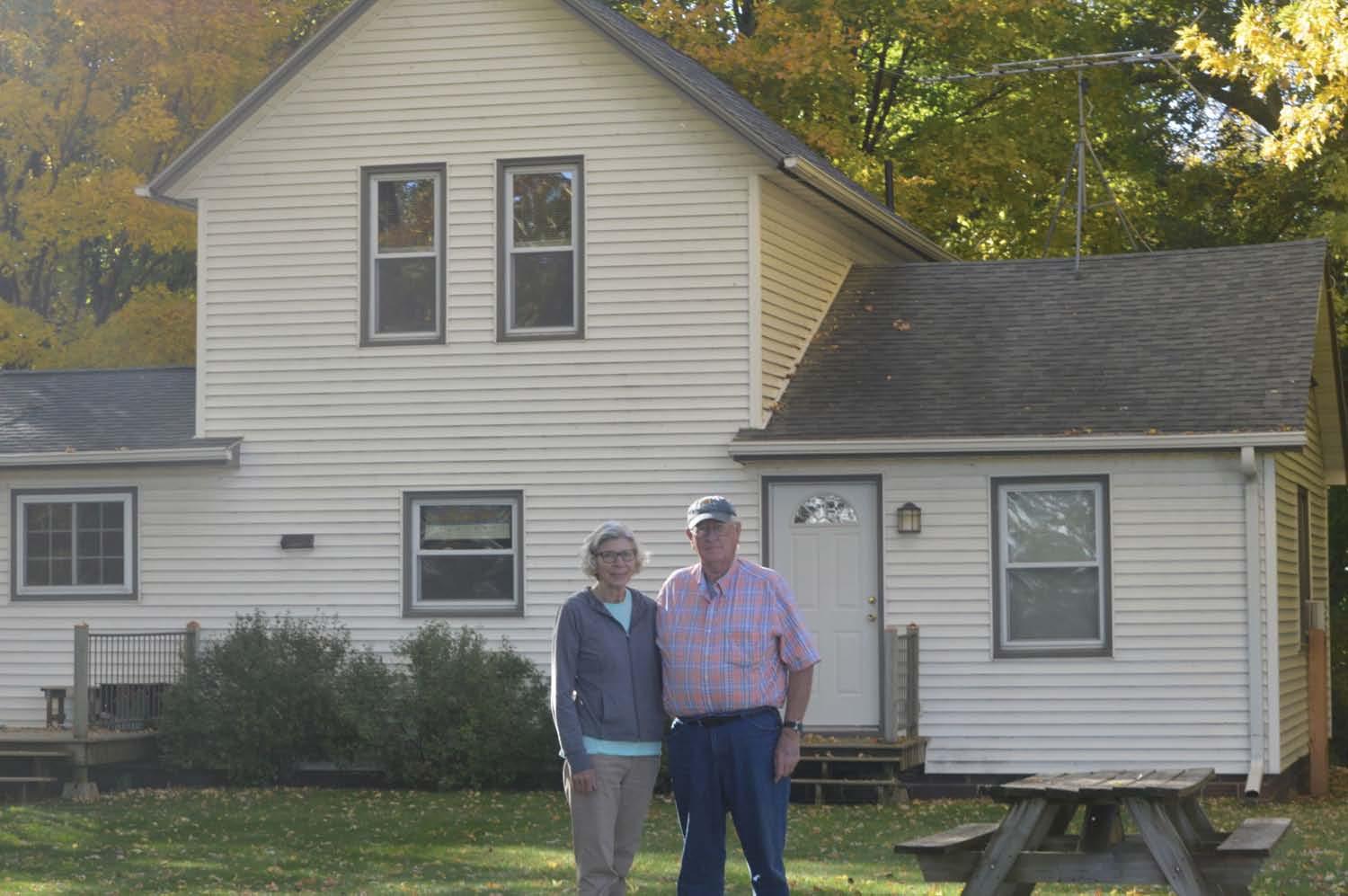
41 minute read
Fifth generation of Wencls work their Owatonna farmland
from Century Farms 2020
by Kate Noet
three generations hold the century farm commemorative plaque. Darren Wencl (left) stands with his son anton and his father Larry. (Photo courtesy of Lori Wencl)
By ASHLEY REZACHEK ashley.rezachek@apgsomn.com
OWATONNA — 2020 has had its ups and downs, but for the family-operated Wencl Farm this year provided a reason to celebrate. 2020 marks the family farm’s 100-year anniversary. Just as in the previous 100 years, the Wencl family continues to dedicate their lives and work to farming. this recognition a farm must be continuously family-owned for 100 years or more, consist of 50 or more acres and be currently active.
Typically recognition ceremonies are held at the county fair, but because of the pandemic, the 2020 Steele County Free Fair was canceled.
“So they mailed (the commemorative plaque) to us this year,” Lori Wencl said. “Normally it would be presented at the county fair, but they mailed it to us because of COVID.” Lori is the wife of Darren Wencl, whose family has owned the farm since 1920.
Although the acknowledgement is nice, the Wencl family makes it very clear that they don’t farm for the recognition, but because they enjoy it.
Anton F. Wencl purchased the farm from Dorothea Olhoeft 100 years ago. At the time it cost $64.39 per acre, for the 116-acre parcel. Anton owned and operated the farm for 21 years before he passed it onto son Laurence Wencl who farmed the land for 37 years. Laurence’s son Larry took over for 34 years before about farming every day. others like to keep to themselves, he once again passing it to his own son, said. Darren. Crops that have been grown “When I was in high school I was on Wencl Farm throughout the years actually afraid of cows,” she said with Although they have quite a few aniincluded corn, oats, soybeans, wheat a laugh, “and now I’m out there and mals, the Wencls farm focuses on and alfalfa. Lori says dairy cows and they’re like my pets.” Her favorite soybean and corn crops. The fall is pigs were raised on the farm while part of the farm — when she’s not harvest season, which means Darren Darren grew up. working as a nurse at the hospital — spends hours in the field reaping the is taking care of the animals. crops, sometimes long after the sun “Then I think it was about the year has set. When he’s not in the field, 2000 that they sold the dairy herd The family of three now has about he’s fixing equipment, changing oil or and now we just do beef cattle,” Lori 20 beef cattle, a couple of pigs, a tending to other important tasks to said. small flock of chickens, a farm dog, keep the farm in working order. This year marks the eighth year un- around the significantly larger cows’ A typical day on the farm for the othder the ownership of Darren and feet. er two family members starts by getLori, who’ve made few changes to ting Anton on the school bus bright the operation. In fact, the farm has “My dad says we have too many cats,” and early. While Anton learns in his maintained its original acreage. Most Anton said. “Yyou can see why,” he third-grade classroom in Owatonna, of the original buildings have been added, gesturing to the half dozen or Lori checks on the animals, making torn down and rebuilt over the years, with one exception, although even so friendly cats and kittens that had gathered for some attention. Some Wencls that building is breaking down. The present house was built in 1942, of the farm cats are friendly, whereas Continued on page 16 according to the Century Farm application. The farm’s current occupants consists of Darren, Lori and their 8-year-old son Anton $100$100OFFOFF PER WINDOW with the purchase of 4 or more Wencl. The three were hoping or interest free to celebrate the achievement financing till 2025* with a get together with friends and family, however COVID-19 Replace the Windows in Your halted those plans. Home for $84 per Month. (based on 5 double hung window white/white) “So we are hoping next year to be able to celebrate,” Lori said. • • 8x Energy Efficient Stronger than Vinyl The couple knew when they • Low Maintenance purchased the farm from Dar• Installed for you ren’s father Larry that they • Stainable EverWood® Interior option would be operating during the • Fiber Glass Frame century anniversary. After figuring out exactly when the farm would turn 100, the Wencls apand several kittens who bravely dart plied to the Century Farm pro gram last February. 2104 N. Riverfront Mankato Dr., Serving you in Southern MN For Lori, farming was uncharted territory. She describes the transition from town life to 507-625-5064 866-625-5064 www.lacinasiding.com since 1996! LIC#20272178 farming life as “interesting” and *Interest will be charged to your account from the purchase date if the says she’s still learning more purchase balance is not paid in full within the finance period. OAC
the sign hangs on the railing just outside Dan and Cheryl sutter’s home north of Waseca commemorating the farm’s sesquicentennial milestone. (Jon Weisbrod/southernmmnn.com)
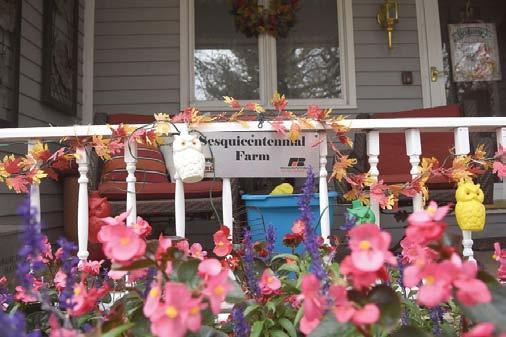
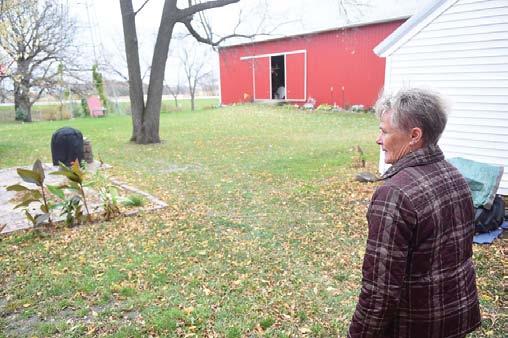
Cheryl sutter walks through her property on the morning of Wednesday, Oct. 14. she and her husband, Dan, returned to her family’s farm in 2014 after spending roughly 40 years teaching high school in the twin Cities. (Jon Weisbrod/southernminn.com)
SUTTER-LEE FARM
TOWNSHIP: Blooming Grove ACRES: 176 COUNTY: Waseca DATE OF ORIGINAL PURCHASE: may 18, 1870 THROUGH THE YEARS: alec K. Lee (1870-1913), Knute Olien Lee (1913-1953), alvin n. Lee (19511953), Dorathea Lee (19531954), Dorathea and raymond sutter (1954-2010), Dorathea Cheryl sutter points out her family’s history as commemorated on a framed plaque inside one of the many buildings on the property. (Jon Weisbrod/southernminn.com) Lee sutter (2010-present) NOTE: Cheryl (Lee) sutter (daughter of alvin and Dorathea) and husband Dan sutter Sutter Knute).” have lived on the property and helped maintain the farmstead “They were a self-sustaining family with cattle, pigs and chickens,” Cheryl said. “At one time they raised Continued from page 5 Knute and his wife, Hulda, cultivated the land for years and eventually started a family of their own, giving birth to four children, including Alvin, who is Cheryl’s father. medical bills in an era where insulin had yet to become readily available. Moving from a much smaller farm since 2014 wheat, oats, corn, too. My grandfather was the one to take it over because a couple of the brothers in the family went to Canada — why they did that I don’t know — and a couple died early. There were some women and they eventually went with their spouses, so it got passed down (to When Knute died in 1951, Alvin — who had suffered from diabetes for most of his life — decided to accept the invitation to run the family farm largely out of a desire to help make ends meet for him and his wife, Dorathea. He’d accumulated a substantial amount of debt, mostly from “just over the woods” outside Waseca when Cheryl was around 3, the first thing Alvin did when he took control of his father’s farm was to reduce the entire operation and become a more economically and financially sound business. He simply didn’t have the physical strength to maintain such a massive farmstead and was unable to hire full-time help, so THANK YOU, FARMERS! he removed livestock from the equation and focused solely on 523 2nd St cultivating crops such as wheat, Kenyon, MN 55946 corn and alfalfa. Phone: (507) 789-5246 Store Hours: “He had to build it back up,” Mon - Fri 7:30 am - 7:00 pm Cheryl said. “They got rid of the Sat 7:30 am - 5:30 pm animals, cattle, chickens and Sun 10:00 am - 4:00 pm pigs and I had a couple sheep and horses. We were spread out Your one-stop shop for doing everything.”
all town and
country necessities. With the affects of his diabe-
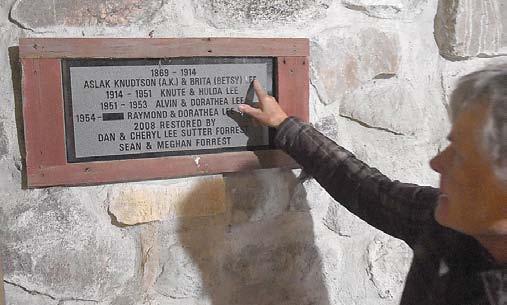
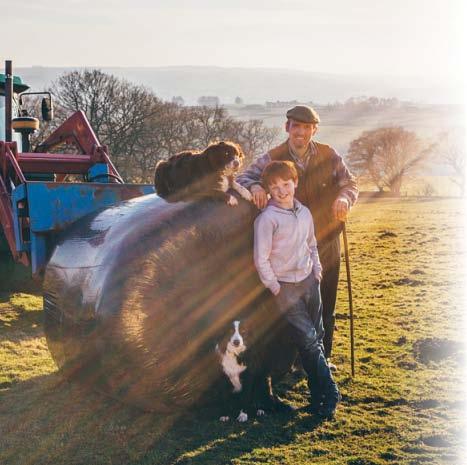
tes worsening to the point where he eventually lost his sight, Alvin died in 1953 at the age of 35. That could have easily signified the end of the Lee family’s deeply-rooted ties to the agricultural industry in south-central Minnesota.
Dorathea simply wasn’t going to allow that to happen.
“When my dad died in 1953 everyone encouraged my mom to sell the farm at that point,” Cheryl said. “She said ‘no.’”
Dorathea was the sole proprietor of the farm a while before remarrying a man named Raymond Sutter in 1954, and the two maintained control of the land for the next five decades prior to Raymond’s death in 2010.
“A couple uncles and neighbors helped and they kept the cattle and kept the chickens and they helped her farm the land,” Cheryl said of the time period before her mother remarried. “My stepfather (Raymond) was actually a neighbor on the very next farm because we have land on both sides of the road. He grew up on the next property over.”
The next evolution of the homestead following Raymond’s death leads directly into where things stand today. Cheryl and Dan have seen their share of challenges since officially making the move back to the farm — overcoming complications stemming from Dan’s heart-transplant surgery in 2017 and the sudden death of their son, Sean, to unknown causes this past May — but have left an indelible mark on just about every inch of the property.
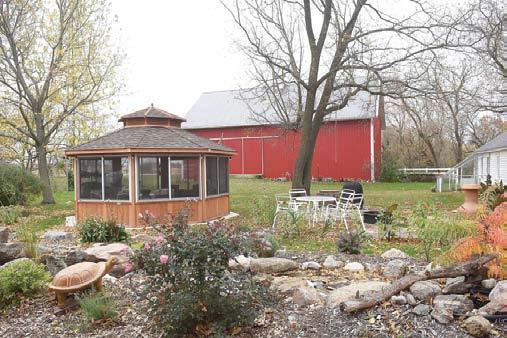
an insulated gazebo and an elaborate landscape featuring an elevated stream bed winding through various flowers and plants were added within the last couple of years to the sutter Farm near Waseca. (Jon a Weisbrod/southernminn.com) Center farm. When the tree was first planted a horse on the loose bit half of it off. (Carson Hughes/ They started on some of the larger hours. That’s 100 acres and it’s three projects before they technically trips around and they’re done.” moved in and have since erected a cavernous, sharply-angled building Cheryl, of course, has been offered a to house their “toys” and converted unique perspective to the evolution one of the barns into a private venue of the entire farming industry over that was used to host their daughter’s the last half-century. She admits the wedding. Cheryl is also a master gar- smaller operations are on the verge dener and recently had a perfectly of extinction as most of them have manicured flower-lined stream in- been “enveloped by one of the larger stalled just outside the insulated ga- groups.” zebo that was also finished within the tivities we need to get done outside,” being utilized to harvest mainly corn, der to make it, you have to be large,” Cheryl said. “And they come in here and can do what I used to do cultivating all day long as a kid in a couple last year. “Lots of these farmsteads are just owned by people,” she continued. Though the coronavirus has im- “Most have sold the land and some pacted their day-to-day lives and are in my situation where it’s rented. severely limited their travel, Dan That’s the biggest thing, farms have and Cheryl still carve out time every gotten so much bigger and they are week to meet with friends for coffee focused and specialized. There’s no on Wednesdays and appreciate the more doing a little bit of this and a simple things like mowing the lawn little of that. It’s become supersized. on a mild spring afternoon. We used to try and do it all. Now “Our day is basically planning the ac- just cash crops.” Cheryl said. “A typical day for me will One thing that hasn’t changed, be in the garden and Dan will mow though, is the small-town hospitality a couple hours every afternoon. We that she grew up as part of the local have a couple riding lawnmowers farming community and beyond. and that’s one of the things he loves After graduating from Waseca High to do. We stay busy.” School in 1965 and leaving home to As for the acres of crops, those are Cheryl Forrest has come full circle. but yield soybeans every three years. “We loved teaching and we had a lot One of Cheryl’s cousins on the Sut- of friends,” she said. “But it’s differter side, Todd Selvik, runs the actual ent here. It’s just like, you walk into farming operation and rents the land a store and you know people. A lot to a group that maintains a number has changed, Waseca is up to 10,000 of agricultural plots throughout the people almost, and it was 5,000 when area. I left. There are a lot of people who “That’s pretty common because in or- iarity and a comfort. It’s, just, fun.” they select and stay with it, maybe forge her own path in Twin Cities, have moved away, but there is famil-
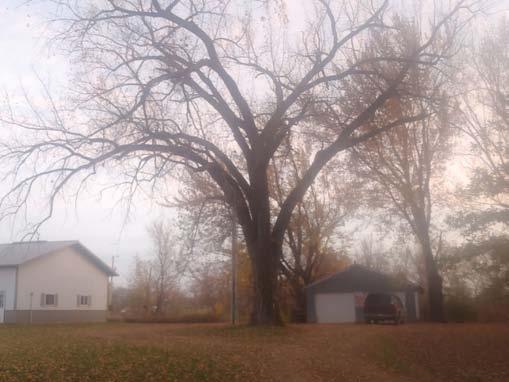

ing all day long as a kid in a couple hours. at’s 100 acres and it’s three “Lots of these farmsteads are just owned by people,” she continued. “Most have sold the land and some are in my situation where it’s rented. little of that. It’s become supersized. One thing that hasn’t changed, e Macho family lived in a fourthough, is the small-town hospitality room house on the property consistthat she grew up as part of the local ing of a kitchen, living room and two farming community and beyond. bedrooms upstairs. e house also A er graduating from Waseca High featured a basement, which was only School in 1965 and leaving home to accessible through a trapdoor in the forge her own path in Twin Cities, kitchen, and a cistern in the house that stored water. In the 1950’s, part of the kitchen was transformed into “We loved teaching and we had a lot a bathroom, which Michelle said was “a happy day for the whole family.” ent here. It’s just like, you walk into In the 1960’s, the family added on a a store and you know people. A lot living room and a full bathroom and has changed, Waseca is up to 10,000 steps to the basement replacing the people almost, and it was 5,000 when trap door. I le . ere are a lot of people who have moved away, but there is famil- e home remains on the farm to this day, though it has faced some troubles over the years. In the 2000’s an arsonist targeted the home and lit on re. e culprit was never caught. When Bernard began his new life as a farmer, his enterprise started with a focus on dairy cows. “My early memories are that my dad had dairy cows and the creamery truck would come every day to pick up the milk cans,” said Michelle. “When the weather was warm and the milk needed to stay cool, we would ll a stock tank with water and use that to keep the cans cool.” e local creamery eventually switched to grade A milk instead of cans, so Bernard began to look into other livestock. He raised white face beef cattle along with ducks, chickens, geese and pigs. ey also kept horses to help plant crops and dogs as well. “ ere was always a dog named Shep no matter how many dogs we had,” said Michelle. While Bernard managed the livestock, Bessie tended to a large garden that would provide the family with enough to eat. Both of them split their time between the farm and other work. Bernard worked parttime at an alfalfa plant down the road while Bessie was either working as a stay at home mom or at the local marketplace. “Everything was canned, butchered or sold,” said Michelle. “It was selfsu cient. You grew your own and did all that.” As a kid, Michelle had plenty of her own chores to do at the farm. e one that stuck out to her the most was riding a two row corn planter. e planter had two arms that stuck out at each time which would dig into the soil and create rows in the dirt. Michelle’s job was to keep those rows straight and keep the hopper lled at the start of each row. “I was always the outdoor person,” said Michelle. “I was on the back of a hay wagon a lot of the time. If there were chores to do, I would hold the pigs while he vaccinated them and things like that.” time, when Michelle was little she was thrown o the horse, but it didn’t run away. Instead, the horse walked up to the newly-planted cottonwood tree and ate half of it clean o . e cottonwood tree still stands in the yard today at 55 feet tall. Bernard raised a lot of animals on the farm from heifers to poultry to bees. A beekeeper by trade, Bernard would get a call whenever a hive showed up in town. Once he retrieved the bees, he would make a new home for them at the farm. In late summer, Bernard would harvest honey for the kids in a Macho family tradition. Using a steam knife, he would scrape the combs o both sides of the frame. en, Michelle would put the frames in an extractor. By turning the extractor, honey would y out of the comb and and run to the bottom. e tradition was shared not just between father and daughter, but also with Michelle and Leroy’s children Jake and April. “ ey took the combs o the top and it would be dripping with honey and wax for the kids that they could chew up,” said Leroy Dahn. A er Bernard’s death, the farm was given to Michelle and Leroy. e couple now lives in Le Sueur and rents out the farmhouse. e land still carries plenty of fond childhood memories for Michelle and one day she hopes to return.“
We always planned on moving back here once we retired, but it hasn’t
A 55 foot tall cottonwood tree stands in the center of the Le Center farm. When the tree was rst planted a horse on the loose bit half of it o . (Carson Hughes/Southernmiin.com)
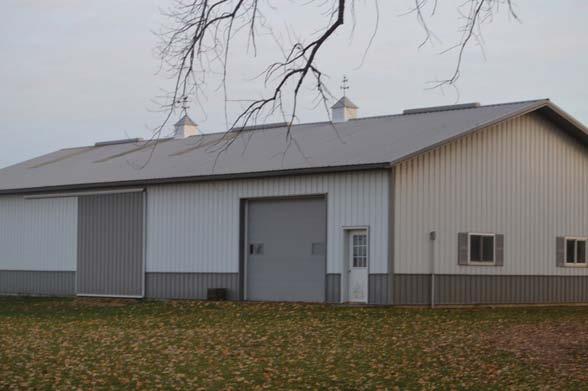
at’s the biggest thing, farms have A barn at the century farm owned by Michelle and Leroy gotten so much bigger and they are Dahn. The farm was home to all kinds of livestock including focused and specialized. ere’s no cows, chicken, pigs, geese, horses and bees. (Carson Hughes/ more doing a little bit of this and a Southernminn.com) We used to try and do it all. Now they select and stay with it, maybe Macho farm Since then, the home has been renovated, and Michelle said that it looks Continued from page 3 nicer than it ever has.
Michelle and Leroy Dahn are the owners of a 100-year old farm that has been passed down over three generations. The farm has raised cows, hogs, bees and once had a one-room schoolhouse on its land. (Carson Hughes/Southernminn.com)



Experience
happened yet,” said Michelle.
a Different Way to Bank
We have been a part of the community since 1924, and we strive to personally get to know customers, building strong relationships they can trust, and give back to our communities. Come experience the difference.


Lori poses with one of the calves from this spring. (Photo courtesy of Lori Wencl)
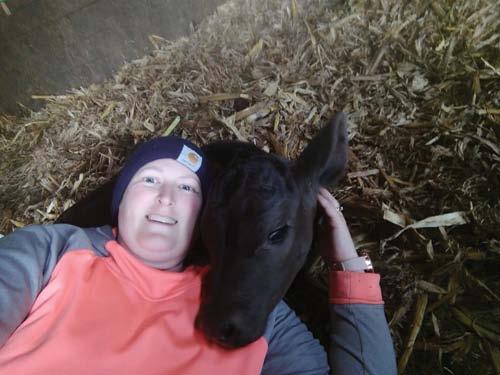

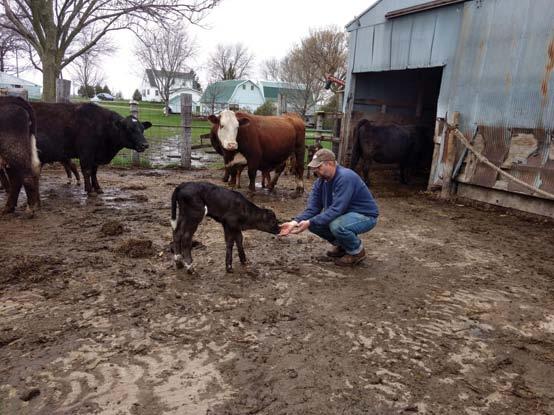
a family photo from when the Wencls visited the John Deere headquarters in moline, IL. (Photo courtesy of Lori Wencl)
8-year-old anton says he might be a farmer when he grows up. Other career options include nascar racing, pro basketball or football. (Photo courtesy of Lori Wencl)

the Wencl family waits until their cows are at least two years old before they are breed. they must keep track of which cow is which to prevent inbreeding. (Photo courtesy of Lori Wencl)

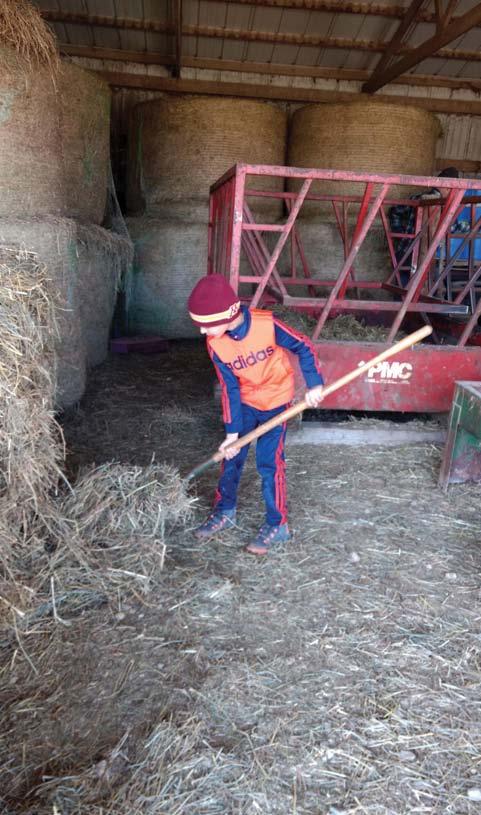
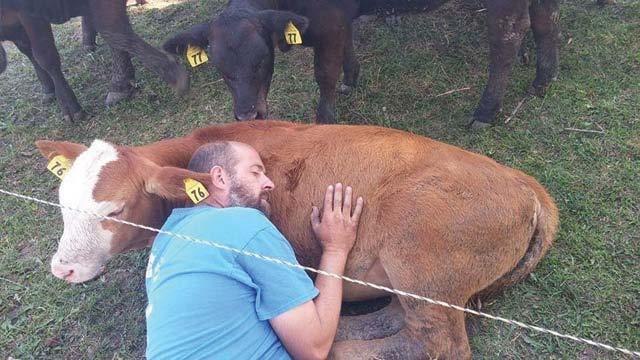
Laurence Wencl’s John Deere’s tractor. (ashley rezachek/southernminn. com)
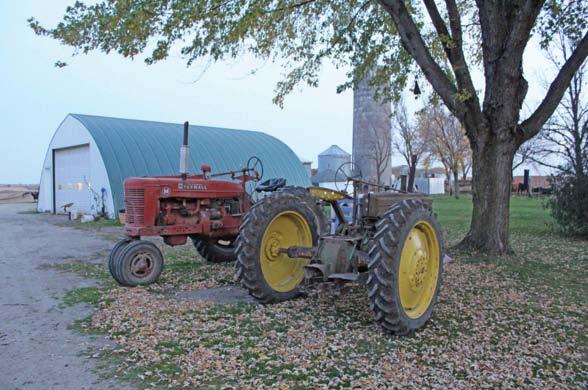
anton helps his dad with the farm’s fencing. (Photo courtesy of Lori Wencl)
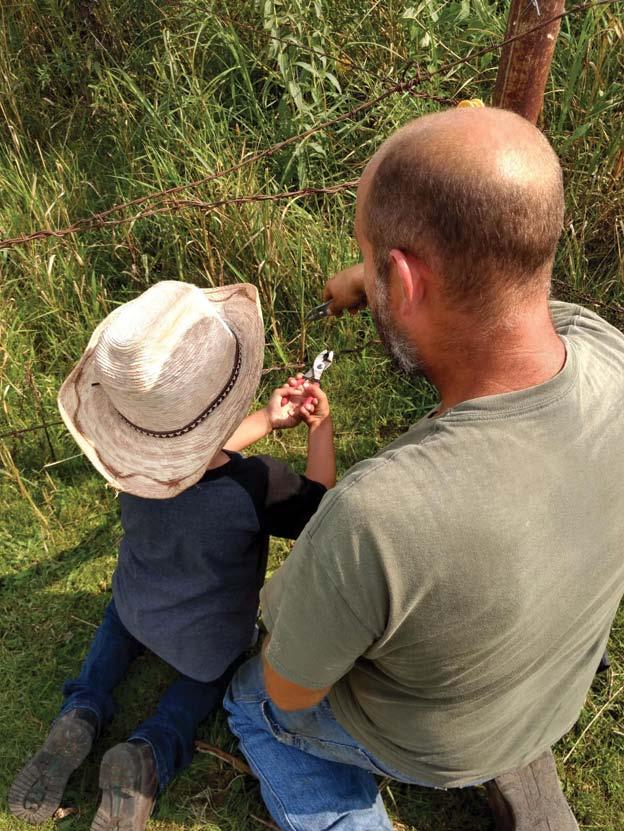
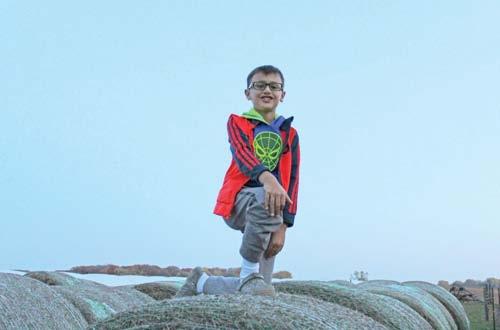
a photo from 1947 of Wencl Farm in Owatonna. (Photo courtesy of Lori Wencl)
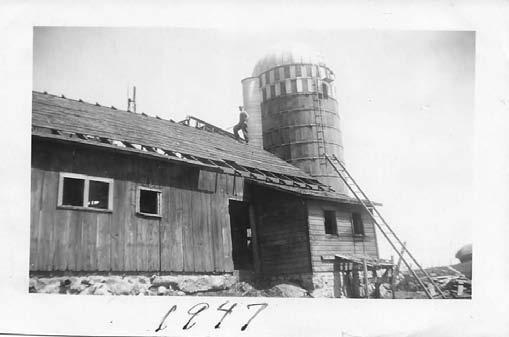
anton holds a chick. the animals are Lori’s favorite part about farming. “I’m all about the animals,” she said. (Photo courtesy of Lori Wencl)


a photo from 1956 of Wencl Farm. (Photo courtesy of Lori Wencl) a photo from 1955 of Wencl Farm. (Photo courtesy of Lori Wencl)
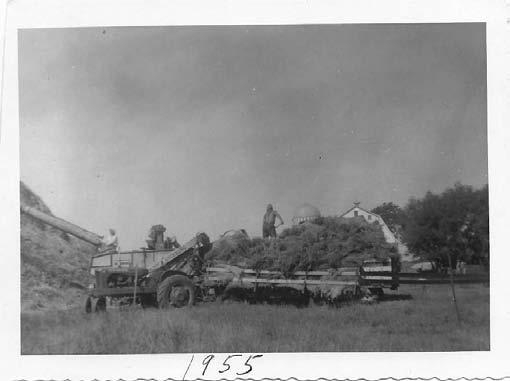
Wencls
Continued from page 13 sure they are fed and adding hay if necessary.
The family farm is truly a family business. Darren’s father Larry, continues to help out on the farm as well as Darren’s brother Jason. Jason has his own farm located just down the road from the Wencl Farm. The two farmers often help each other out. As of mid-October, they had finished harvesting soybeans and hope to harvest the corn before it snows.
Anton helps out around the farm where he can.
“I help out a lot with feeding the animals at night and sometimes ride in the machines when they are out in the field,” Anton said.
Once the very busy harvest season is over and the cold winter approaches, the Wencl family switches gears, but continues to work. “There’s always something to do,” Lori said. During the winter they usually fix up equipment and continue to tend to the animals, making sure the animals’ water doesn’t freeze and that they are well fed. Once spring arrives, the planting and calving season begins. During the summer the family bales hay.
“One of my favorite things to do is running on the bales,” Anton said. He climbs up a bale and demonstrates his moves, jumping and running across the tops of the piled bales of hay.
The 8-year-old boy says he might want to take over the farm when he grows up, but also dreams of being a professional NASCAR driver, basketball player or football player.
Regardless of whether Anton continues the family farming legacy, Lori and Darren say they will be supportive in whatever path he chooses.
“Right now we are just playing it by ear, I mean you never know what the
future holds,” Lori said.
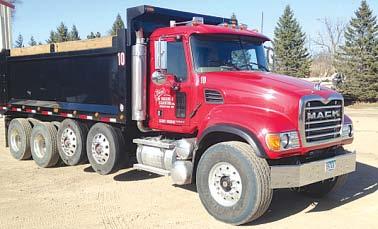
Supporting Local Farmers And Exceeding the Expectations of our customers since 1954 Mulch • Screened Dirt • Boulders Decorative Rock Limestone Gravel & Sand Recycled Asphalt / Concrete Driveway Improvements Basement Excavation Site Prep • Septic Design & Install Demolition Landfill On Site
TRUCKING & EXCAVATING
507-685-2222 • timmstrucking.com • 24366 Holland Ave • Morristown
Pigs in the pen on the King family farm. (Photo courtesy of Barb Damerow) King we got to know each other, and we shelled corn together, and then he’d Continued from page 10 pay me to come over and do some labor. I’d help with some different the King farm, running his own op- things; I planted some of his fields eration about 2 miles away. He was once.” 24 years younger than Ralph. They originally met through a transaction Mager went on to become friendly and quickly developed a relationship. with both Ralph and his wife Carol. He often played cards with some oth“When he was still milking, I sold a ers at their home. When Carol got calf to him. But then he sold off his cancer, Ralph was a bit too old to cows and asked me if I’d take it back, drive, so Mager would take them to and so I did,” Mager said. “Then the Mayo Clinic in Rochester. And

runette, ruth, mary Louise and ralph King on the King family farm in 1929. (Photo courtesy of Barb Damerow)
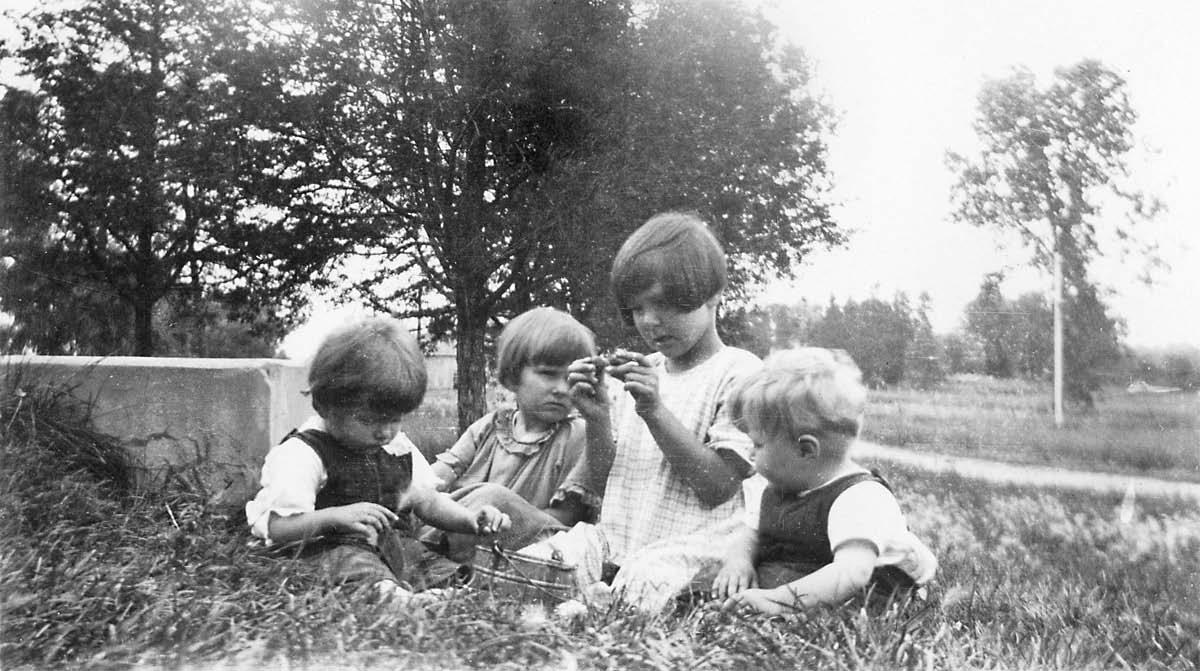
she would have Mager stay in the room during consultations. He admired them both.
“She was such a selfless person, and Ralph said she died because they wanted to experiment on her,” Mager said. “She said ‘I’m 81, and if they can experiment on me and help someone in the future, that’s the way God wants it.’ It was just remarkable knowing both of them.”
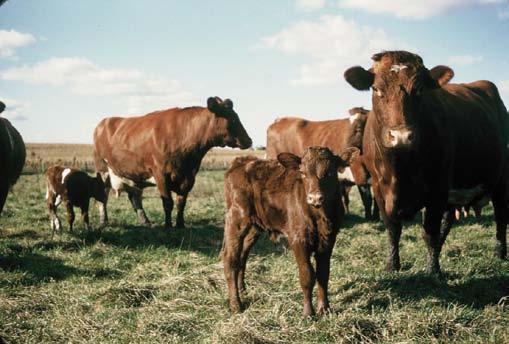
Beyond the fields, Mager noted that Ralph was always active in his community, serving as the bell ringer and an active volunteer at his church. And when it came to farming, he was always ready to lend a hand.
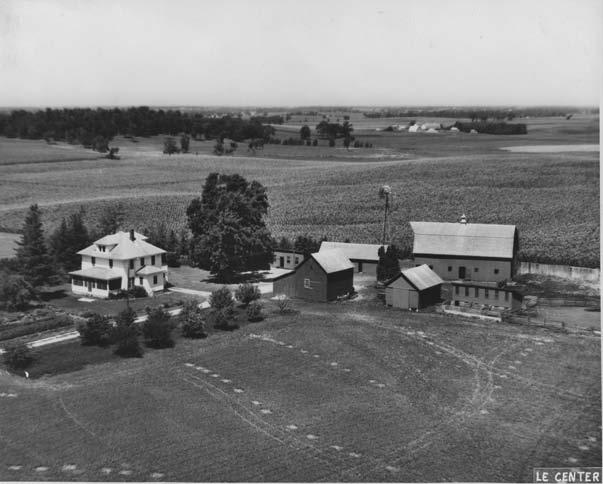
some of the cows on the King family farm in the 1950s. (Photo courtesy of Barb Damerow) “If someone needed to get a tree out, he’d come and cut it and take the wood,” Mager said. “I’m in the cities right now, and here it would cost $3,000 to take a tree out, but he just did stuff like that.”
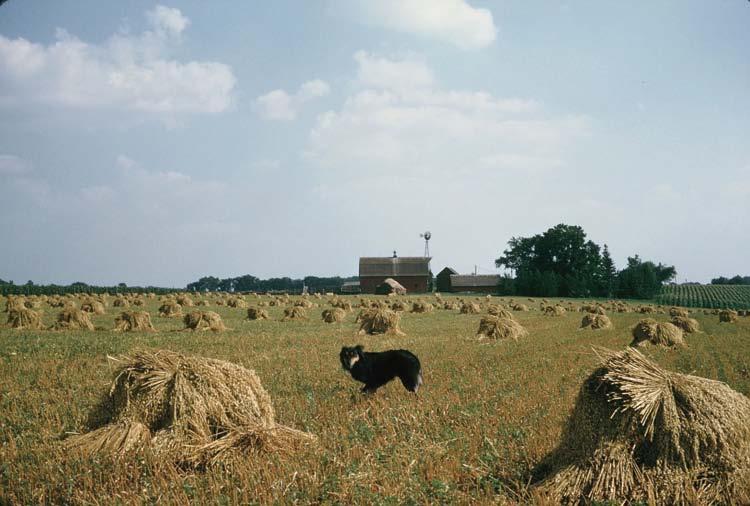
Mager added, “And he made a connection with people. A lot of people were dead and gone from his time, but he still made a connection with people 25 years or more younger. He just had that ability.”
Both Wacker and Mager said it was quite an accomplishment for the Kings to see their farm reach 100 years in the family. life, because it was my grandparents’ an aerial photo of the King farm in Le sueur County in the 1940s. (Photo courtesy of Barb Damerow) said. “Usually the farms go before farm, so I have very fond memories you can get that close. The kids move of going to visit,” she said. “I have off, show no interest in farming, nothing but fabulous experiences of something like that.” being a city girl going to the farm, and it’s the same for my children. Just As Damerow works through the de- the simplicity of that life is something tails of her uncle’s estate and contem- I learned people can be completely plates the future of the farm, she can content with. For my grandparents always take joy in the memories. and uncle, they didn’t need materi“I have known the farm my entire simplicity.” alistic things. They found beauty in
ralph King, left, along with his dad, John King, and some of the family farm’s horses in 1945. (Photo courtesy of Barb Damerow)

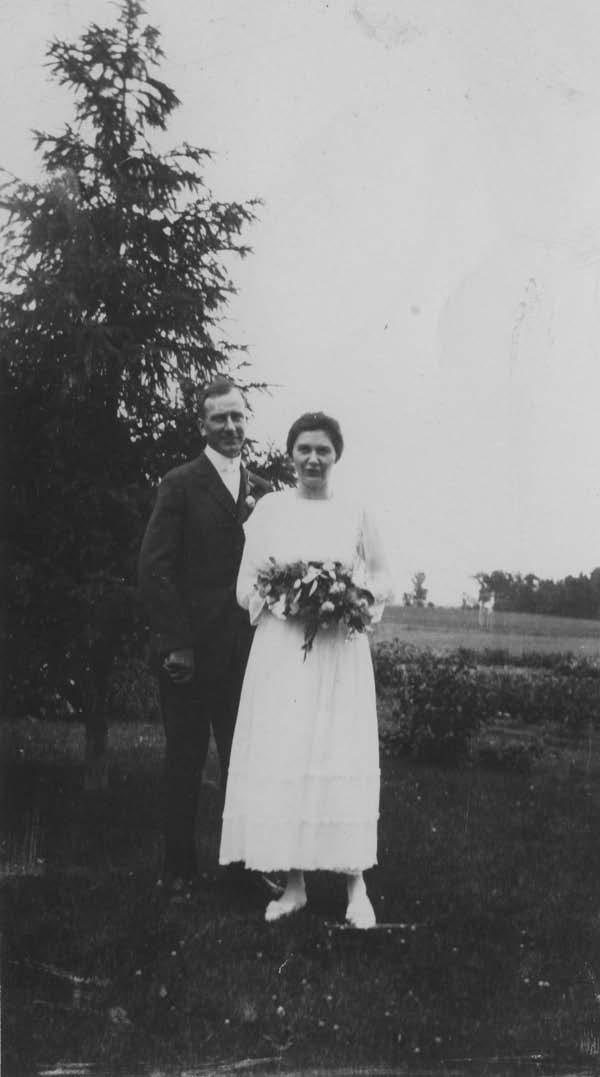
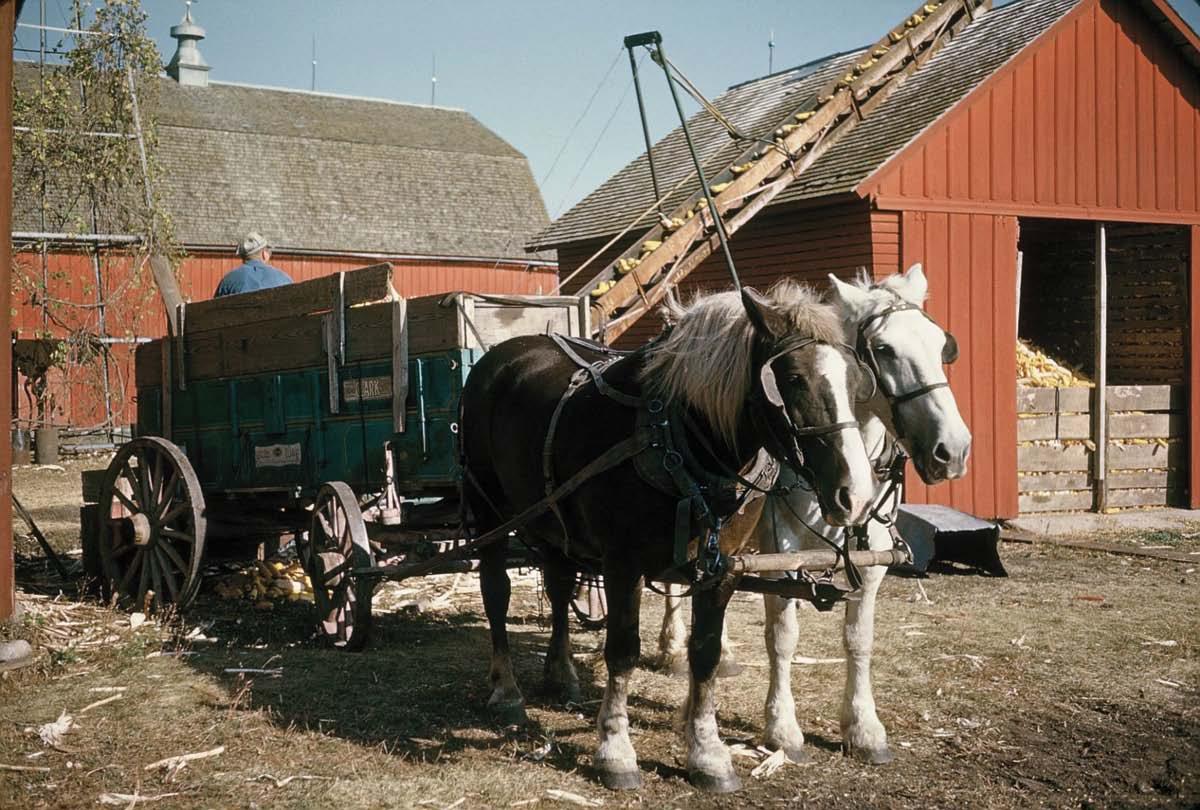
John and Hattie King on their wedding day on July 1, 1920. they took over a now century farm that same year. (Photo courtesy of Barb Damerow)
Horses, wagon and corn in 1953. (Photo courtesy of Barb Damerow)
In memoriam Ralph J. King February 14, 1927 ~ September 29, 2020

the original farm was 293 acres and consisted of 150 acres of tillable land and hills for a pasture. Four generations were raised on the moorhouse Family Farm, now in its 151st year in the family. (Photos courtesy of al and Joyce moorhouse) Moorhouse Al and Joyce their retirement home on the 40 acres of the Moorhouse Continued from page 9 family farm in 1985. In 2019, the farm had been in the family for 150 When Emelia Amelia Moorhouse died at 92 in 1955, the farm was sold by her estate to her grandson, Al. Al married Joyce Pagel on Oct. 14, 1956. They farmed the land, where they raised four children, Marie Verna, Thomas Winton, and twins John Edward and Jeffrey Scott. After farming for 18 years, Al sold part of the years. Many photos tell the story of family life, raising crops like born, soybeans, wheat, alfalfa and the occasional peas for the canning company, along with cows, cattle, hogs, chickens, ducks, sheep and flowers. Many meals were cooked in the family’s kitchens and served following prayer at the family tables. farm to his daughter Marie and her husband. It was 1968, the same year the large barn Richard built burned They had just about every animal except horses, per a request from Al. to the ground. When Marie and her husband divorced, Marie settled with her folks, retaining 11.1 acres where she raised her children. “I always wanted horses, but [Al] never let us have horses, because when he was a kid, he always had to clean the horse barns so he was never going to do that again,” said Joyce

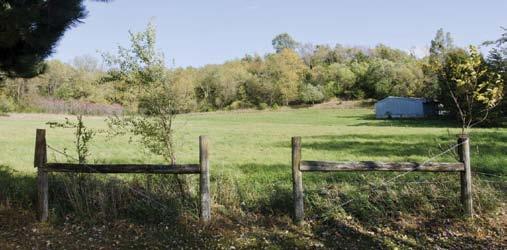

While al and Joyce lived on the farm site, they had a beef cow herd of about 40-45 beef cows in the pasture. they also raised their own caves in a feed lot on their property. (michelle Vlasak/southernminn.com)
SHARING STORIES & MEMORIES
al and Joyce moorhouse say four generations have been raised on the farm and even more memories have been made.
Joyce recalls al talking about his uncle and his dad, as his uncle ed taught him how to fish. ed also loved the woods and would walk out to them from town. Joyce says he also talks about different meals his mother cooked, some of the history of the farm and how self sufficient they were back then.
al says he enjoyed sunday afternoons, because that was the only time they had to go sliding. since he was the youngest of the neighborhood kids, al says they would challenge him to slide down the hill, especially in conditions where the hill was extra icy from the previous day’s rain. al jokes saying if he straightened the sled out and slid straight down the hill, it’s possible he could’ve landed on the moon or been on the nasCar track traveling 200 mph. Due to a washout from water levels in the springtime, there was a spot full of snow. as al slid down into that spot, the rails got stuck in the snow and the remaining part of the sled traveled with him.
thanks to all of the pictures the moorhouses have, they are able to look back on the history and pass the pictures down from generation to generation. Joyce says they have a lot of family photographs, giving them a firsthand look at how hard they worked back then. It was a different time, Joyce says, as they were more self sufficient having their own apple trees, butchering their own beef/hogs, growing their own potatoes and making their own sausage in their smokehouse. Pictured is the original moorhouse Farm House, “now and then,” while owned by George a. moorhouse and Verna (miller) moorhouse (al on his horse molla), emily amelia (Zemke) moorhouse, richard F. moorhouse and family, allard s. moorhouse and Joyce e. (Pagel) moorhouse, built new home in 1985, marie V. moorhouse, Otte (owns orginal house now). (Photos courtesy of al and Joyce moorhouse)
with a laugh.
Another part of that daily task involved shoveling hay in front of them.
Joyce, who wasn’t raised on a farm like her husband, said when she got to the farm, one of the first things she asked him was what the difference between straw and hay was. “I thought that was very important to know,” said Joyce with a laugh. “It didn’t take very long to figure that one out. When you’re raised in town you don’t have the foggiest idea.” said the farm came with dairy cows, so Al increased the herd. Then they realized they didn’t have a bulk tank and the various other things they needed, so Al switched to beef cows. They had an abundance of hills on their property so Al added fencing and they ran a beef cow herd of about 40-45 in the pasture. They also raised their own calves and had a feed lot to
raise them in. After 18 years on the farm, Al went into the fertilizer industry in Randolph and later got into selling fertilizer equipment and did a bit of traveling. During that time, Marie took over the farm. When Joyce and Al moved to Iowa in 1974, Al would drive back to the farm to build a garage at their current home. Joyce Joyce and al moorhouse stand in front of their current home, just down the road from the original farm site where they lived for 18 years. the property they live on is connected to the original farm and they call it “the 40.” they enjoy going for rides on the trails in the woods and spending time in the outdoors gardening, cutting wood and with their family. (michelle Vlasak/southernminn.com)
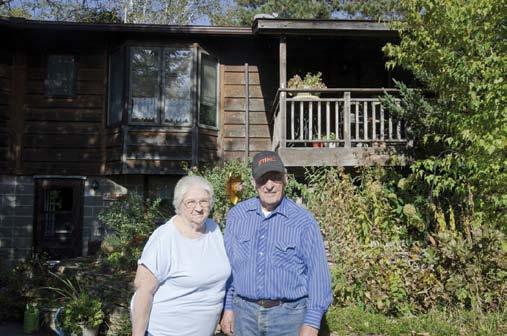
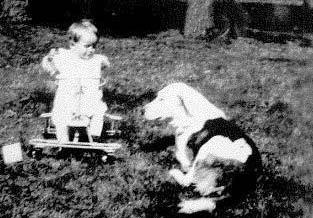
al moorhouse sits next to his dog at the home place in 1932. today, al recalls living on a farm including sliding down the snowy, icy hills on sunday afternoons and always tearing/ripping his clothes while working outside. (Photo courtesy of Joyce moorhouse) transferred from of her job in Iowa to Illinois and during her eight years there drove back and forth from Illinois to Minnesota to visit Al.
Al started on their retirement house in 1984-85, with the help of some contractors and family members. Before the house was built in 1990, Al and Joyce would camp and spend time on the 40.
Today, they enjoy seeing an array of wildlife including deer, geese, the common raccoons and possum and birds. Joyce says they get to see a lot eagles come their way from the river and head towards the high cliffs.
The original farm was 293 acres, and they have since sold off a few home sites, so right now it’s 254 acres, with 150 of those acres tillable. When they moved out of the original farmhouse, they rented the house and the land to Al’s cousin. Over the years, several farmers rented the land out.
Joyce says they have 20 acres of woods that lay behind their neighbor, something she finds unique about their farm.
“Our kids like to deer hunt in the woods, and they have paths through the woods. We have an outdoor wood furnace, so we still cut the deadwood and clean it up,” said Joyce. “…We can do much more here and we have a view of [Lake Byllesby], people go to the lake to get away, but we are at the lake.”
Joyce especially enjoys visits from her four kids, 12 grandchildren and 14 great grandchildren who often camp for the weekend or just spend time together at the farm.
Greg Born (left) and his father Gary work together on a tractor at the family farm. According to Greg’s parents, the father-son duo have been tackling the farm together since Greg could walk - something they continue to do today. (Submitted photo)
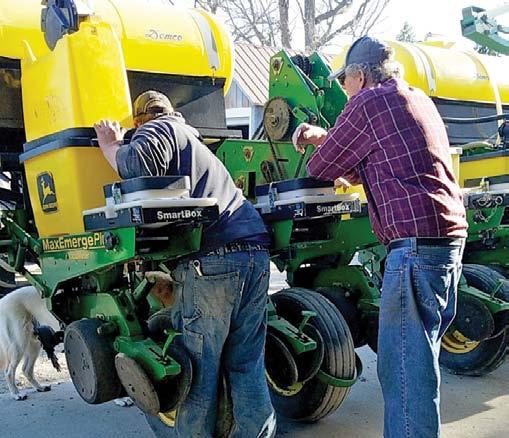
Born
Continued from page 8 “Greg has been farming with his dad since he was able to walk,” said Anna Born, Greg’s mother. “Every year he would tell his dad when it was time to harvest and that he should be out there combining.”
“I really enjoy farming and can’t imagine doing anything else,” Greg said. “It’s in my blood and has always been my lifestyle.”
Looking to the future, Greg says he has a lot of dreams for how he can expand and grow this century farm.
“I would like to be able to run more acres of land and not have to work a full-time job in town, it gets to be a lot,” Greg said. “We would also like to add some livestock one day and build a new house.”
As technology continues to improve in today’s world, the couple admits to fully taking advantage of the advances in farming equipment and hope to continue to do so. Over the last seven years, Greg and Amanda Born have made many upgrades to the equipment to make certain areas of farming a bit easier.
One thing, however, the Borns want the farm to remain in the family.
“We would absolutely love to see the farm stay in the family for another 100 years,” Greg said. “A lot can happen in that time. We don’t know what the future holds.” Schwichtenberg them if their children don’t have an interest in farming, but Tamties but they did do what they were asked to do,” Bob said. Continued from page 4 my said they’d like to keep the woods in the family since many of their children and grandchildren enjoy hunting.
Rob recalls playing basketball outside on the farm all year round, even in the snowy winters. He also enjoyed dirt biking and driving the go-cart.
“I have several pictures of Bob mowing lawns and one of the kids asleep on the lawn mower when they were smaller,” Tammy said.
Tammy herself fed the cows and carried the milk from the pale to the milk cans. Although she doesn’t care to drive the more modern kind, she recalls a time when she could drive a tractor all day long.
Some things change, some stay the same
If he had a choice, Bob said he’d like to go back to “the way it used to be” when it comes to farming. He commented that all the small farms are gone, and now farming operations have 300 to 400 dairy cows. Tammy added that farmers now run thousands and thousands of acres, but the 278 they own kept them busy.
As for farming equipment, Bob said, “I kind of like the new stu because you get done faster, but I didn’t get to use a lot of it.”
Currently, Tammy and Bob rent half of their land to their grandson and his stepdad and the other half to another farmer. Keeping the farm in the family doesn’t matter to e 80-acre woods beyond the farm gives a unique touch to the Schwichtenberg homestead.
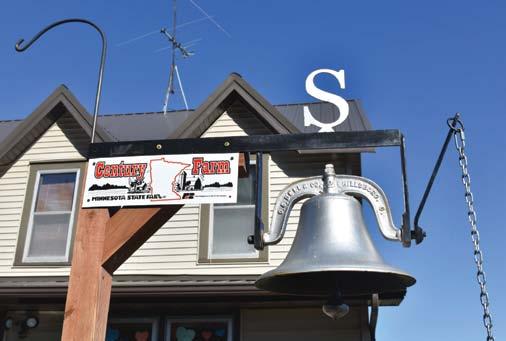
“All of our kids and grandkids have learned how to hunt in that woods,” Tammy said. “ ey squirrel hunt, they turkey hunt, and deer hunting is the big thing in our woods. I had to quit because too many young people are out there. It was a lot safer in the living room.” The dinner bell outside the Schwichtenberg Century Farm in Morristown is a relic Tammy and Robert have held onto over the years. (Misty Schwab/southernminn.com)
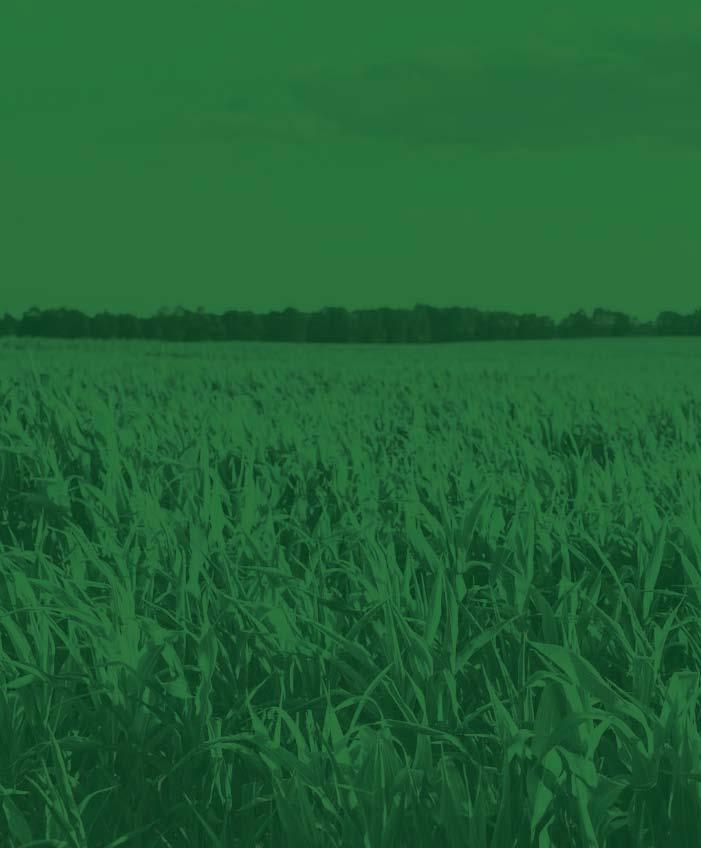

Tammy said she likes the location of their farm, just 5 miles out from Morristown. Until their son built his house across the road, they couldn’t see another house from their property. e roads have become busier over the years, but that doesn’t make her want to move. e couple spend many weeks of the winter in their camper at Denny’s Resort in Bena, Minnesota, but the farm is still home. Robert “Bob” Schwichtenberg had an aerial view of his Morristown farm “When we go to visit our framed many years ago. (Misty Schwab/southernminn.com) daughter in Wisconsin, I think I couldn’t live where they live,” Tammy said “… I could maybe live in Morristown, but not a bigger city.” Said Bob: “I’m going to stay here as long as I can.” UFC AG SERVICE CENTER - LAFAYETTE Your premier destination for equipment sales, parts & service!

Our full service shop is staffed with factory trained and certified technicians. We offer: DOT services and truck repairs, routine and preventative maintenance, tire scaling and on-farm tire service & more.
Duane schuldt, his son, steve schultz, and their dog, Duke, stand by one of their tractors this fall. (Pat Beck/southernminn.com)

Schultz
Continued from page 6 retired. He was a certified sales agronomist with the local co-op for 25 years. When he left in March, 2012 he was location manager. Now he’s mostly farming.
“Dad retired, and I came home,” Steve said. “I also help my cousin sell Pioneer Seed as a sales associate. I drive truck a little bit and help out if people are looking for an extra hand, which is good.”
Farm sizes up, numbers down
The original Schultz farm started out at 100 acres, but has grown to 435.
It grew over the years as family members bought more acres. By today’s standards, the Schultz farm is about average size.
While the size of farms have been increased, the number of farms have been steadily decreasing over the years. In Minnesota in 1978, there

Milo Peterson Ford Co. is here for all your FORD family needs. SHOP: Both new and used vehicles SERVICE: We are honored to have three Senior Master Technicians on staff! We are dedicated to maintaining top tier customer service for both new & pre-owned car buyers! Milo Peterson Ford Co. 3020 457th St Way Kenyon, MN 507-789-6113 • www.milopetersonford.net the schultz family photo. Front row from left: ethan, Heidi, Duane, Christy, Conner and William. Back row: erick, Chuck, Jan, stacey, Jake, alec, Deb, Isabella and steve. the families are: Duane and Jan schultz; steve, Deb, William and Isabella schultz; stacey schultz; Chuck, Heidi, ethan and erick schultz; Christy, Jake, alec and Conner may. (Photo courtesy of steve schultz)
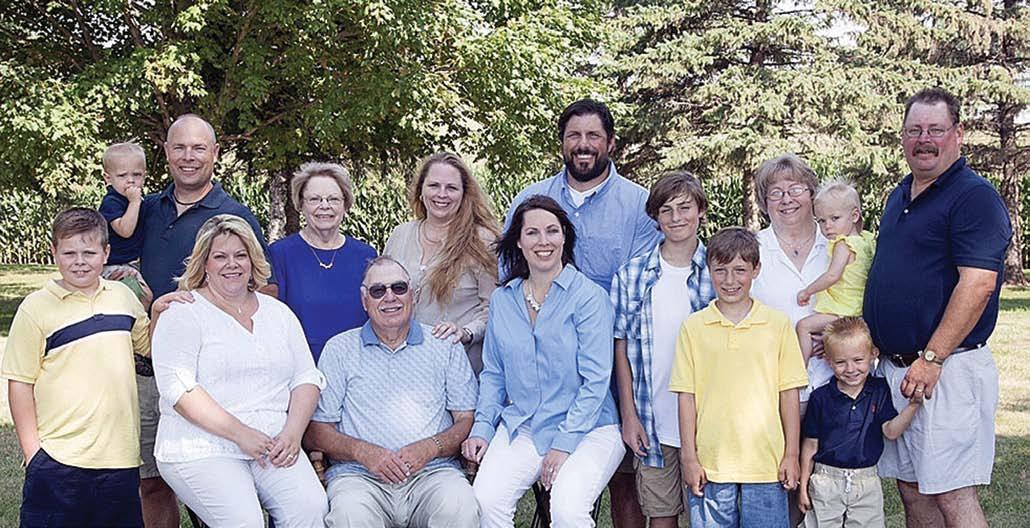
were 96,537 farms averaging 288 acres. In 2017, there were 68,821 farms averaging 371 acres, according to the U.S. Department of Agriculture. “Smaller farms can’t keep going, and when they buy this machinery, they can run over much more acres at a given time,” Duane said. “Small farms can’t afford all that big stuff. It’s $300,000 to $400,000 for a tractor and $300,000 to $400,000 for a combine. And then land is worse yet.
“A lot of it is owned by other individuals and rented out. Older people probably don’t want to sell it, so they keep renting it for income.”
Steve added: “And I think there’s less and less interest in it. Both my sisters grew up on a farm, but they’re up in the big city now and not in small towns and rural areas.”
24-7 job
Duane said: “It’s 24-7 when you’re on a farm. If the weather is good on Sunday, you work. If it’s Christmas, you work. When
I had cattle here, every day I was here at 4 o’clock to feed whether it was Christmas, Thanksgiving, year round. Now without animals, you can take off if there’s nothing to do in the field. But if the weather is good, you better work Saturday or Sunday.”
Steve said: “And you don’t call in sick,
too.” Weather, field and equipment conditions determines when they work.
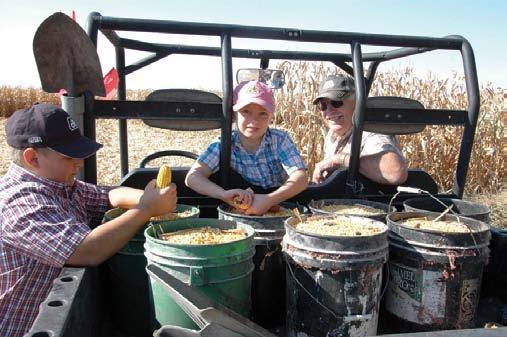
“Like yesterday we were combining corn,” Steve said. “I had the dryer going. You got to watch the dryer, so I was over here at 10 o’clock, midnight, 3 in the morning and 7 in the morning. So it doesn’t catch on fire and make sure that it’s still drying and not putting wet corn in storage.”
“It’s just when you got machinery running, you like to be around and check on it to make sure it’s all going right.”
Harvest time is busiest time of year.
“It’s also my favorite time of the year,” Steve said. “You work all year for this.”
They get some time off in winter. But Steve rents another farm and said he ends up plowing snow there and at his dad’s. “Plenty of book work, too, and hauling grain out.”
Things kind of slow down in mid July and August, but a lot of times you’re trying to clean out the bins and get everything ready for fall and work on equipment, Steve said William schultz, 10, and his sister, Isabella, 7, shuck corn in the back of a 4-wheeler, watched by their grandpa, Duane schultz. (Pat Beck/southernminn.com) The Schultzes started harvesting earlier this year, in mid-September. Duane said the first farmers used oxen. The first people coming up the t in rural “This growing season was warmer, Mississippi River had horses. William and Deb. (Pat Beck/southernminn.com) so a lot of growing degrees brought the crop on faster,” Steve said. “The soybeans and corn are faster. On Oct. 7, we’re already half done with harvest and it’s coming out of the field dry. It runs through the dryer as fast as you can combine it. It’s not burn“Now you’ve got tractors that steer themselves, and you’ve got combines with yield monitors,” Steve said. “The technology is crazy. You still got to turn it around at the end of the field, but it will keep you in a straight line. ing as much propane which is a good thing.” The tractors are also climate controlled. “You can set it at 65 degrees Changes in farming in there and if your butt gets cold, you can push a button and turn your Steve said there have been a lot of changes in farming over its history. seat warmer on, just like a car,” Steve said. “But I probably spend more time in a tractor than a car.” “Imagine starting out 150 years ago — what the yield of corn and soybeans were, probably have horses and oxen,” Steve said.
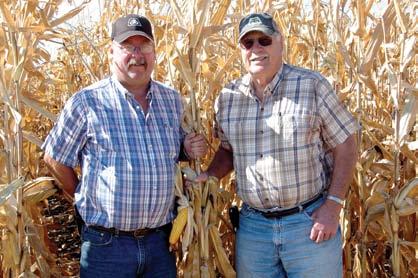
steve schultz (left) and his father Duane schultz run the 150-year old family farm which features 435 acres of corn and soybeans. (Pat Beck/southernminn.com)
three generations gather at the Duane schultz farm in rural st. Peter. From left are Duane, Isabella, steve, William and Deb. (Pat Beck/southernminn.com)
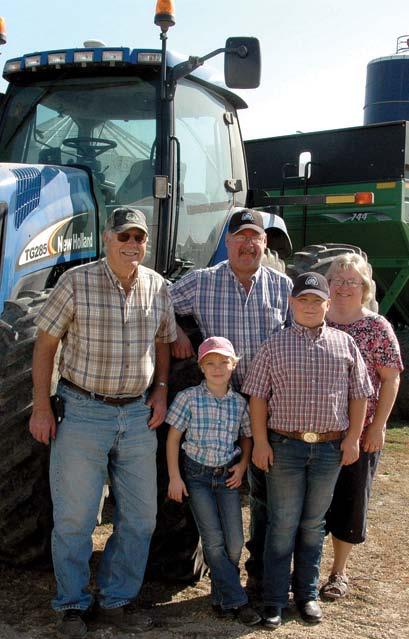
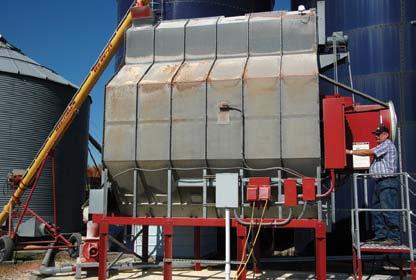
steve schultz runs a grain dryer on his family’s farm. (Pat Beck/southernminn.com)
Congratulations CENTURY FARMERS

Thank you for all you do for our communities & our economy. Guardian Energy appreciates you!
Guardian dian EnergyEnergy





4745 380th Avenue Janesville, Mn 56048 Main number: 507-234-5000 Corn Buyer: 507-234-5003 guardiannrg.com
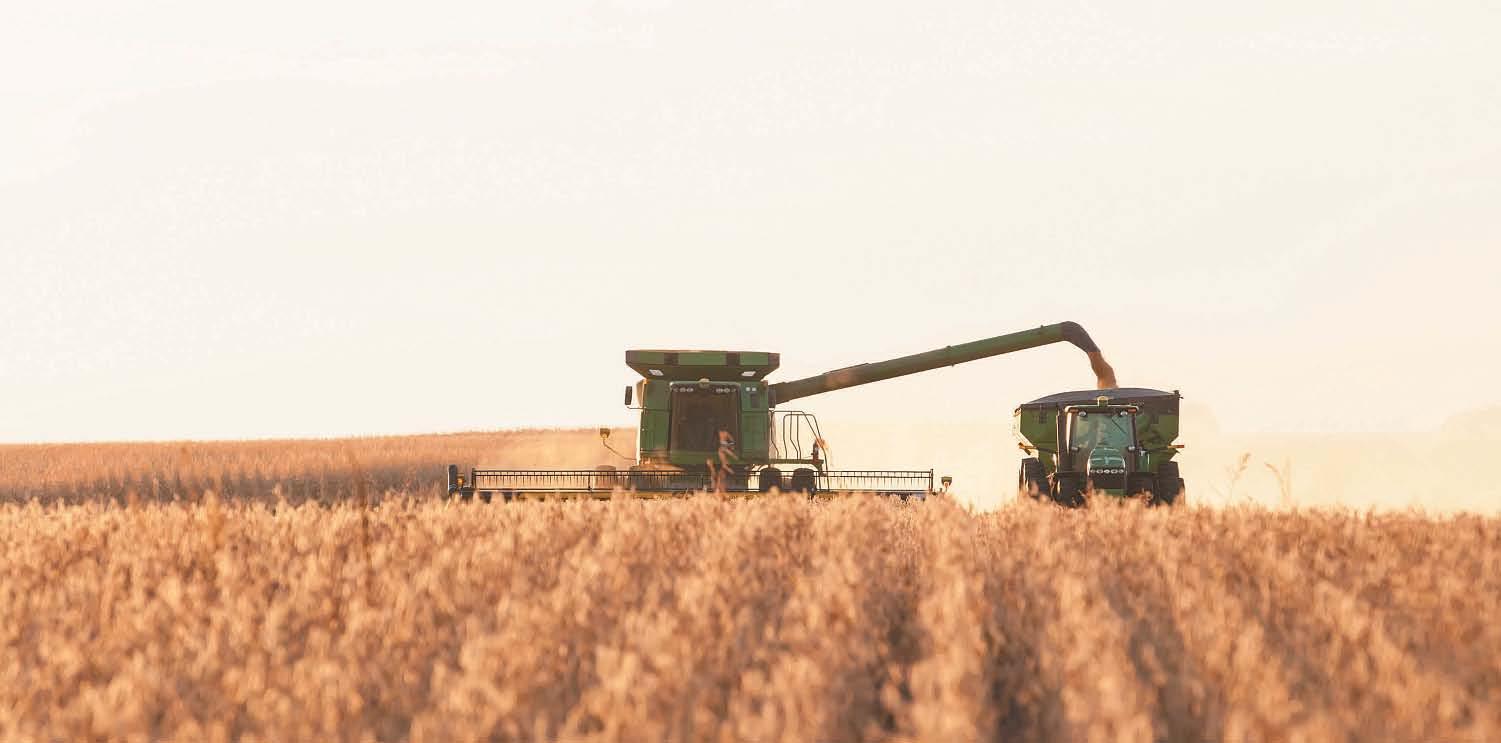

Wencls photos
Continued from page 17
A photo from 1958 of Wencl Farm. (Photo courtesy of Lori Wencl)

A photo from 1957 of Wencl Farm. (Photo courtesy of Lori Wencl)
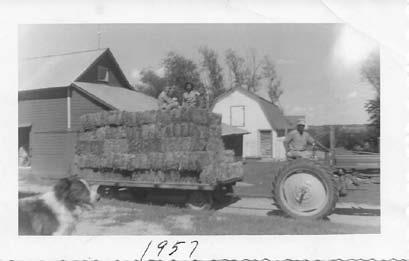
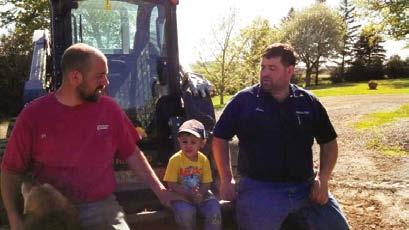
Darren (left), Anton and Jason discuss their plan while sitting on the bucket of the skidloader. (Photo courtesy of Lori Wencl)
